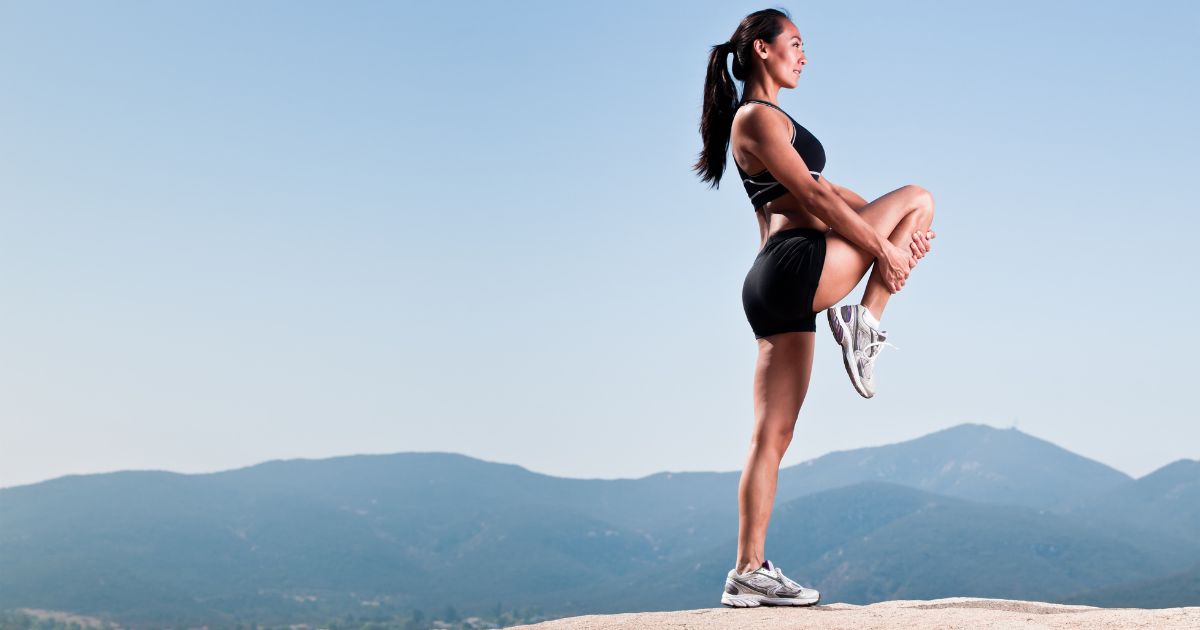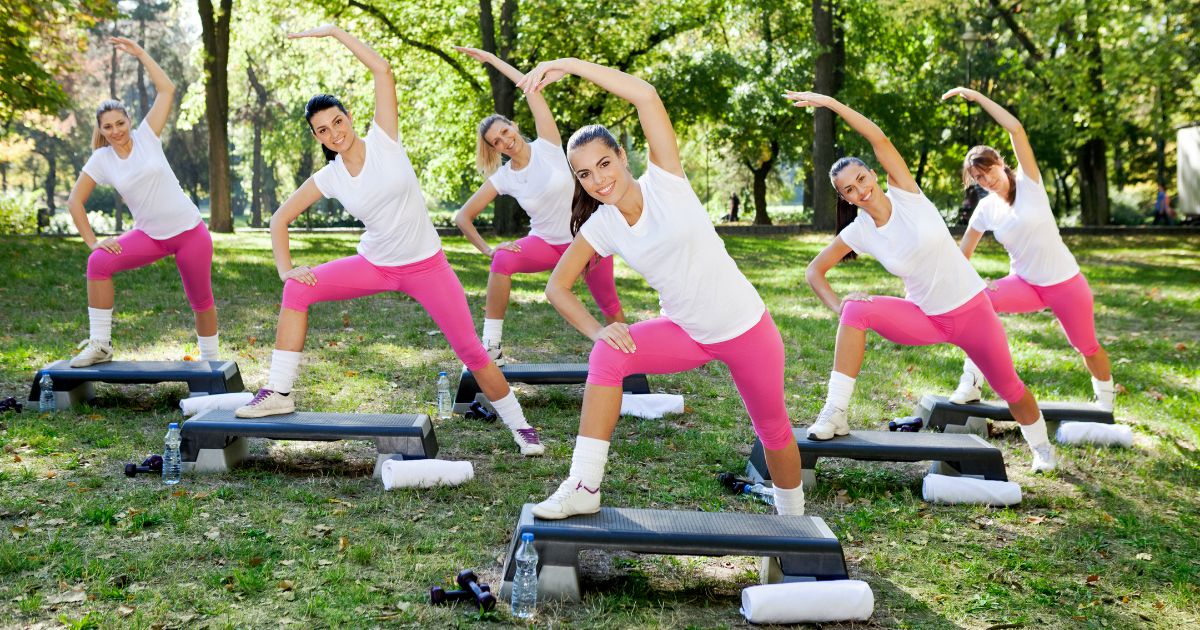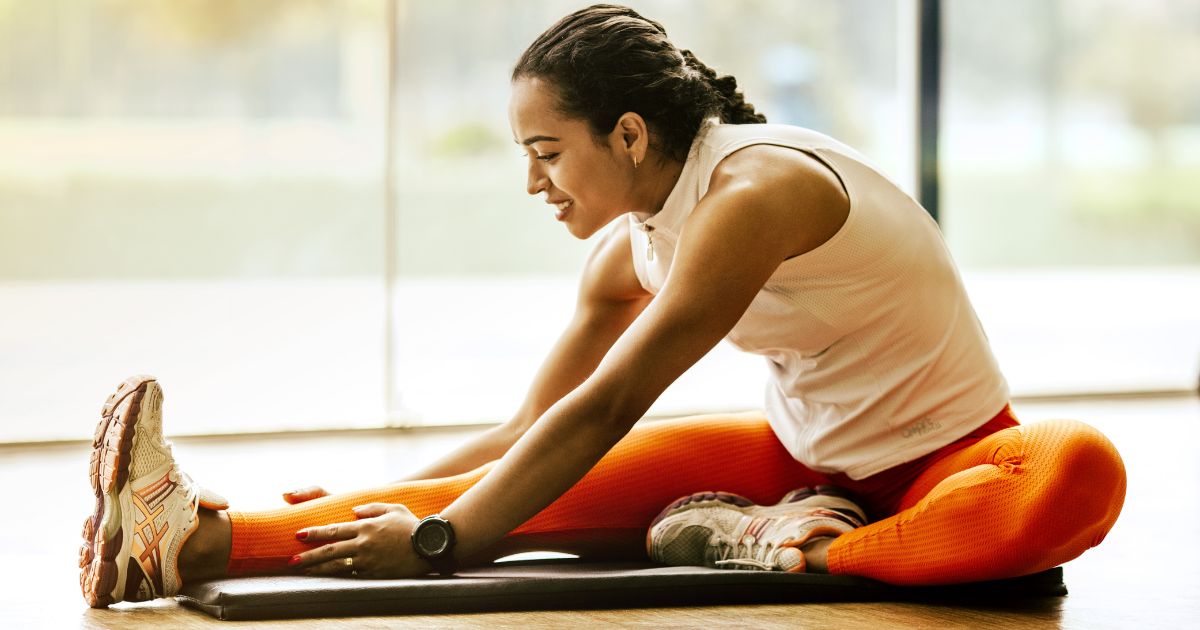Getting warmed up is always a good idea when you are about to work out. This can help you avoid injuries and prepare your muscles for the task ahead. In addition, you don’t need to spend too much time on these exercises; it should only take about 10 minutes or so for you to complete these warm-up exercises.
Benefits of Warm-up Exercises

- Helps to prevent injuries by increasing your body temperature and getting your muscles ready for work.
- Helps improve flexibility and mobility, which is important for performance and injury prevention.
- Increases your heart rate and gets more blood flowing to your muscles, which can help boost energy levels and improve endurance during your workout.
- Improves coordination, reaction time, and balance, which are important for maintaining good form and staying safe during a workout session.
Pre-Workout Warm-Up Exercises

1. Dynamic Stretching
This type of stretching will involve movements that mimic the motions of your workout and improve your range of motion. For example, if your exercise involves swinging your arms around while raising them overhead, try stretching your shoulders by executing this movement at a slow and controlled pace. Dynamic stretching is great for your warm-up routine as it improves circulation and helps you avoid injuries due to stiff muscles.
2. Walking or Jogging
Walking or jogging are exercises you can easily do anywhere – inside the gym, on the treadmill, etc. Try walking quickly for a few minutes to get your heart rate up before moving on to dynamic stretches, so your body is ready for more intense exercise.
3. Leg Swings
To perform this warm-up exercise, stand up with feet shoulder-width apart, then swing one leg back while keeping the other leg straight in front of you (do not bend at the knee). For example, if you’re swinging the right leg back, the left leg will remain straight. Next, swing your leg 20 times in each direction and repeat with the other leg. This exercise helps your hips and thighs get ready for more strenuous activity.
4. Hand Walks
To perform this warm-up exercise, start from a push-up position with hands directly under your shoulders. Then walk your hands along the floor towards your feet until you’re on all fours with your legs extended straight behind you. Holding this position for about 30 seconds will help prepare you for more intense activity by loosening up tense muscles in your arms and chest.
5. Lunges
Lunges are a great way to loosen up tight hamstrings and hip flexors. To perform a lunge, take a big step forward with your right leg so that your left knee is bent at about 90 degrees and your right thigh and shin are parallel to the floor. Your right knee should be directly above your ankle bone in front of you. Then push off with your left foot and switch sides, repeating for about 30 seconds on each side.
6. Jumping Jacks
Jumping jacks are great for blood flowing throughout your body before any exercise. Stand up straight with your feet together, arms by your side, palms facing forward, and to get started, jump out wide while swinging both arms overhead until they’re pointing straight behind you as if you were trying to touch the wall behind you. Continue this movement for about 30 seconds, then slowly return to starting position and repeat.
7. Trunk Rotations
Start in a standing position with your feet shoulder-width apart and your knees slightly bent, holding a weight in each hand. Be sure that your shoulders are back—not hunched forward—and your abdominal muscles are engaged to maintain good posture throughout the exercises as you rotate side-to-side, taking care not to twist at your waist. Your right arm should be parallel with the floor while making small circles in one direction until it is stretched as far out as possible and then continue moving in reverse directions, aiming for eight repetitions on each side without pausing or stopping in between sets; repeat the set a total of 1 time.
What to Eat Before Exercising

Before following any exercise routine, it is essential to have a diet rich in protein, healthy fats, and carbohydrates. It is also recommended that you consume caffeine before working out since this can help boost your energy levels and increase the intensity of your workout session.
Resting Post-Workout
After an intense workout, taking some time for recovery is very important. Although your muscles may be tired initially after completing a strenuous exercise routine, resting them for about 20 minutes afterward will allow them to recover and avoid feeling extremely sore or stiff during future workouts.
Tips For Beginners
If you are new to exercise, it is crucial to start with low-impact exercises that allow you to build up your fitness level gradually. Some good pre-workout warm-up exercises for beginners include walking, light jogging, simple stretches, and calisthenics like arm circles, lunges, hamstring curls, and toe touches.
As you progress in your fitness journey and become more comfortable working out, you can experiment with more challenging pre-workout routines like plyometric drills and high-intensity interval training (HIIT). These workouts will help increase your strength and endurance levels while also helping you burn more calories in less time.
Whether you are a seasoned exerciser or just starting, there are a few key things that you can do before your workout to help ensure that you get the most out of your time at the gym!
Get Your Blood Moving

Going for a light jog or walk will help increase circulation throughout your body and prepare it for more intense activity later. If you’re short on time, try doing basic stretches like arm circles, leg swings, hamstring curls, and toe touch to help loosen up muscles and joints so they won’t feel stiff during exercise. This is particularly important if you lift heavy weights or perform explosive movements like plyometric exercises!
Practice Proper Form
Many people find it helpful to have someone watch their technique as they perform each exercise so they know they are doing it correctly. If you don’t have a workout buddy, try recording yourself on video and reviewing your form with a personal trainer or online fitness community. Make sure you aren’t using too much weight on the bar if you plan to perform cardio after your strength training sessions – this will protect against injury and help you get more bang for your buck!
You can also read about:
- How To Move On After A Breakup?
- 7 Healthy Dinner Ideas to Make at Home
- 5 Tips To Treating Blackheads At Home
Get Limber

Practicing yoga is an excellent way to increase flexibility and prepare your body for exercise. Even five or ten minutes of pre-workout stretching can make a huge difference in how much effort you put into each rep and reduce the risk of injury!


